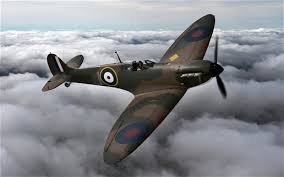
WARRIOR’S RETURN By Timothy Ashby
I saw my father last night.
Mother had gone to bed, pleased that I was home again during one of my rare visits. Making myself comfortable in a frayed armchair, I opened a novel. Cocooned amid familiar books and musty furnishings, surrounded by silver frames displaying fading ancestors, I felt at peace. Tilly, mother’s Jack Russell, dozed at my feet. Warmed by the fire, momentarily free from the burden of adulthood, my eyelids closed.
Tilly’s whine, a mournful little cry of confusion, awoke me. A chill permeated the room despite the fire. Then I saw him.
He leaned over the old desk with his back towards me, shoulders broad under the pale blue Royal Air Force tunic. He turned, allowing me a glimpse of his profile. Tilly whimpered, backing under my chair. Although his features were shadowed, I knew every detail of my father’s 24-year-old face.
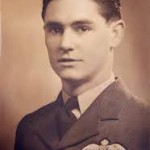 He looked at me, expression pleading. The cold deepened. I longed to go to him but felt paralysed. He turned back to the desk and pointed his index finger. Then he sighed – a faint, weary sound on the border between imagination and reality.
He looked at me, expression pleading. The cold deepened. I longed to go to him but felt paralysed. He turned back to the desk and pointed his index finger. Then he sighed – a faint, weary sound on the border between imagination and reality.
Tilly barked, shattering the atmosphere. My father was gone.
His visit was nothing new. I had seen him numerous times from the earliest days of my childhood, before I knew who he had been and what he had become.
He was lost in May 1944, less than six weeks before my birth. His Spitfire disappeared on a mission over Normandy. Vanished, he became just another name on a long roster of Kentish warriors missing in action since the days of Agincourt. Resting place unknown, father’s existence was reduced to a brass plaque on the wall of our parish church, near memorials to uncles lost in the Great War and an ancestor who perished in the Crimea.
Mother never remarried. Her temporary stay with father’s parents became permanent. As the years passed my grandparents joined their predecessors in the churchyard, leaving an empty plot beside them in the hope that their only son would one day come home.
I first saw the handsome man in the uniform on my fourth Christmas Eve. Nanny had gone away for the holidays and I was left on my own upstairs. Exploring, I found a bedroom door ajar. Creeping inside, I discovered an Aladdin’s cave of delights for a small boy: toy soldiers, model airplanes, cricket bats. While I was playing with a tin car I noticed a man standing in the corner. He had sad blue eyes that matched his uniform. I said hello but he did not reply, so I returned to my play. He was gone when I looked again.
I found out later that the room had been my father’s. My grandparents never changed anything in it, and neither did my mother. I saw the man several times there when I went in to play. I knew he liked me, even though he never spoke.
A year later I came across my mother weeping in her bedroom, 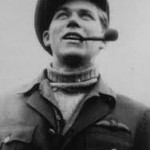 head bowed over a photograph. I hugged her and asked who the man in the photo was.
head bowed over a photograph. I hugged her and asked who the man in the photo was.
“Your daddy. But he went away before you were born and is never coming back.”
I was happy to know that the nice man in the blue uniform was my father, but confused about him never coming back. I cheerfully explained to her that he was a regular visitor.
Mother questioned me at length, first incredulous and then accepting my innocent account as I described her husband in detail. She shut herself away for several days after that. When she emerged, she seemed happier, as if she believed that my father had returned to watch over us.
As the years passed, though, I realized that Father was seeking our help.
The morning after I saw him in the library I returned to where he had stood. Mother was planning a holiday and had left some maps strewn across the desk. I stood where I had seen him and tried to duplicate the way in which he had pointed. Normandy lay beneath my hand on a large-scale map of northern France. With mounting excitement, I grabbed a magnifying glass and scanned the map. At first, nothing unusual caught my eye. Then I saw it.
To the casual observer it would have appeared as a water stain, a tear drop perhaps. But under the magnifier I noticed the mark’s resemblance to an RAF eagle emblem. It lay near a village called Montbrieu.
I caught a night ferry to Calais and drove through the early morning, stopping only for coffee and petrol near Rouen. Passing through Montbrieu, I headed south with the map on my knees. After two miles I began to despair, seeing nothing but open fields. I stopped and reversed into a lane to turn around. In the rear view mirror I saw a distant figure in a blue uniform. When I turned to look it had vanished.
I climbed a fence and slogged through a muddy field towards the spot where I had seen the figure. A recently excavated drainage ditch bisected the field, and I walked along it until I noticed a large piece of corroded sheet metal. Sliding down the bank into knee-deep water, I brushed soil from a crumpled fuselage section until a faded RAF roundel was exposed.
The War Graves Commission was very efficient. They had a team on the site in two days. Assisted by local gendarmes, they excavated down to the aircraft’s cockpit. I turned away as they removed the shattered canopy. Shortly afterwards one of the excavators came over and handed me something.
“Found this on the pilot,” he said. “Remarkably well-preserved, isn’t it?”
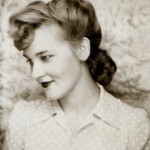 It was a leather wallet. I opened it with shaking fingers. Atop RAF identity papers was a photo of a young woman.
It was a leather wallet. I opened it with shaking fingers. Atop RAF identity papers was a photo of a young woman.
My mother.
This story was inspired by media reports of missing WWII pilots found in France.
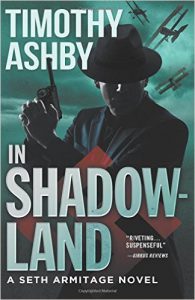
Leave a Reply